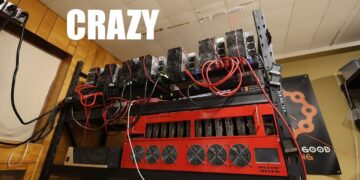In crypto, MEV typically refers to bots and searchers on chains like Ethereum reordering, inserting, or censoring transactions around DEX trades and liquidations to extract value from users in the form of worse prices, failed transactions, and higher costs.
However, did you know that Bitcoin also has MEV-like dynamics at the mempool and policy layer? It’s akin to its own quiet version of MEV, without DeFi-style bots front-running swaps. Instead, miners and pools use fee signals, mempool policies, and block templates to determine which transactions clear first.
Bitcoin Core v28 turned full replace-by-fee mempool policy on by default (mempoolfullrbf=1) and added limited 1-parent-1-child package relay. Miners and pools that run Core or compatible software inherit these defaults, but they can still choose alternative policies.
Yet, the public mempool is only part of the auction that determines which transactions are cleared in the next block, as out-of-band routes to pools and wallet-level fee controls also play a role.
Within the Bitcoin network, miners and pools are effectively the decision-makers. They ultimately decide which consensus-valid transactions are included in blocks, based on the mempool and policy settings they use.
Bottom line: Bitcoin has a soft form of MEV for everyday users. Small fee changes, package construction (parent + child), and direct-to-pool paths can nudge your transaction ahead of others, even when they were broadcast first.
When a miner assembles a block template, transactions are effectively selected in this rough order:
Transactions or packages they have seen and verified as consensus-valid.Packages with the highest effective fee rate when ancestors and children are combined.Replacements that pay more than conflicting transactions under BIP125.Any out‑of‑band deals or pool‑level policy filters that override the pure fee rate.
In practice, this is how miners quietly decide which transactions ‘win’ the next block.
Compared with Ethereum and DeFi MEV, where searchers run arbitrage, sandwich, and liquidation bots to extract value from smart‑contract interactions, Bitcoin’s “soft MEV” is quiet.
There is no front-running of DEX swaps or liquidation auctions; instead, miners and pools adjust their ordering via fee-based incentives, package selection, and occasional off-chain payments. That contrast is why this MEV is far less visible to the average user.
How miners pick winners in your mempool
Recent fee and mempool data frame why small ordering edges matter. According to YCharts, the average on-chain fee stands at $0.68, down from the previous year.
Hourly windows in October showed bursts and near-empty gaps on mempool.space’s block fee rate view, creating periods where a minor absolute fee delta can move a transaction to the top of a template.
According to Hedge With Crypto, fees fell to about 0.96% of block rewards in June 2025, the lowest share since January 2022. According to BitInfoCharts, hashrate sits around 1.1 zettahash per second, keeping competition steady for any incremental advantage in template yield.
With ancestor-feerate mining and package relay, the practical fee auction is increasingly package-based rather than naively per-transaction.
Since Bitcoin Core’s ancestor-feerate mining (PR #7600), block templates consider the combined ancestor and descendant package feerate. That’s why CPFP lets a low-fee parent plus a high-fee child beat an isolated high-fee transaction.
This is why child-pays-for-parent routinely pulls stuck parents into a block when the combined package clears the miner threshold.
According to No Bullshit Bitcoin’s v28 release recap, default full RBF means any unconfirmed transaction can be replaced by a higher-fee version that pays more than all conflicts and the bandwidth increment set by BIP125.
The same release also introduced opportunistic 1-parent, 1-child package relay and made TRUC (version 3) transactions and P2A outputs the standard by default, along with a limited form of package RBF.
Later Core versions (v29+) maintain full-RBF as the default mempool policy and continue to evolve package relay.
Out-of-band fee lanes, policy filters, and soft MEV
Out-of-band payment rails widen the gap between public mempool order and what gets mined. ViaBTC’s accelerator submits transactions directly to the pool, a path that can elevate a transaction with a lower in-band fee rate because the missing fee is paid off-chain.
These arrangements can skew template selection and reduce transparency when they occur frequently, as the on-chain feerate alone no longer explains inclusion.
Miningpool.observer publishes template and block pairs, highlighting missing or extra transactions and conflicts, which provides public evidence of inclusion choices that did not align with a simple max-feerate view.
Policy filters, which govern relay but not consensus validity, are a second lever that affects which transactions reach miners on time. Standardness policies are not consensus rules; miners can include any consensus-valid transaction even if relay nodes drop it.
The recent OP_RETURN change illustrates how defaults shape propagation. Developers merged a shift in the v30 cycle, removing the long-standing ~80-byte default limit for OP_RETURN in policy, raising the default data carrier size, and later tweaking how node operators can configure it.
Soft MEV in Bitcoin’s long-run fee economy
Public episodes also illustrate discretionary filtering at the pool layer. OCEAN chose to filter inscription-style data, and Marathon’s 2021 OFAC-compliant experiment showed template selection can deviate from a pure max-fee ranking when pools pursue policy or public relations goals.
The rules governing replacements and packages establish the practical limits of priority. BIP125 requires a replacement to pay a higher absolute fee than all conflicts and also cover a minimal incremental relay fee.
Yet, RBF rules (including BIP125) are mempool policy, not consensus. Miners can always mine any consensus-valid replacement they see first.
Wallets that fee bump often aim to leap to the next block’s fee rate bucket with a material increase to avoid repeated churn, a heuristic rather than a rule. CPFP remains a direct way to source a fee when a parent is stuck, and a 1-parent, 1-child relay in v28 raises the probability that a fee-sponsoring child arrives in peer mempools quickly enough to change the following template.
According to the opt-in RBF FAQ, zero-confirmation acceptance remains a risk that grows when full RBF is widely deployed, since there is no global first seen, and asynchronous relay means replacements can reach a miner before the original reaches that miner’s template builder.
What this means for everyday users
From your perspective as a wallet user, tiny decisions in how you set fees or structure transactions can quietly move you up or down the miner’s queue.
Queue-jumping via RBF is commonplace: a higher-fee replacement can overtake earlier broadcasts. CPFP allows you to sponsor a stuck parent by paying from a child, thereby raising the package’s effective fee rate. Direct-to-pool accelerators act as an emergency lane when public mempools are congested.
In practice, small fee deltas and package construction are the “soft MEV” edges that decide who clears first.
Consider two similar transactions: Alice sends a payment with a modest fee while Bob uses RBF to bump his fee by a few sats/vB. Even if Alice broadcasts first, Bob’s higher replacement can leapfrog into the next block under BIP125.
Or imagine a stuck parent transaction rescued by a child; if you attach a child with a high fee, the combined package often wins inclusion sooner than a single high‑fee transaction with no dependencies.
Likewise, a transaction with a low on‑chain fee rate can still win if you use a pool accelerator to pay the fee out‑of‑band.
Template visibility is improving, which narrows the information gap on soft ordering choices. Bitcoin Optech noted work on cluster mempool heuristics that detect feerate increases in block templates and covered proposals for nodes to share templates, allowing peers to compare what miners plan to include.
These ideas aim to make deviations from fee maximization easier to spot, whether due to OOB compensation, policy filters, or simple latency.
The forward path depends on fee levels and burst frequency, and the incentives scale as the block subsidy shrinks below 3.125 BTC over future halvings.
If average fees remain around $1–$2 and fee share holds near low single digits, most soft MEV activity will come from modest RBF bumps and CPFP around anchors, with OOB used as an emergency lane.
If bursts recur around inscriptions, headlines, or a looser OP_RETURN policy environment, average fees can jump into higher brackets for short windows. Fee share can reach the high single digits on spike days, and out-of-band paths and package bidding will become more apparent in template and block diffs.
If a sustained high-fee regime emerged and fee share trended higher, theory from Carlsten et al. on time-bandit incentives becomes more relevant, although Bitcoin’s large hashrate and pool structures temper execution in practice.
The mechanics remain straightforward. Miners build templates using ancestor-aware scoring, wallets, and service source fees, with RBF and CPFP as specified in BIP125. Package relay was introduced in Core v28 onward, and OOB lanes provide pools with a direct channel for priority.
That’s the quiet MEV of Bitcoin: miners and pools don’t front‑run your swaps, but they do quietly pick winners in your mempool using fees, packages and side channels.










